Add your promotional text...
Samsung Galaxy S10 5G Review: The Future of Connectivity Meets Flagship Performance
The Samsung Galaxy S10 5G sets itself apart with cutting-edge 5G speeds, a vibrant 6.7-inch display, and top-tier performance. However, its large form factor and premium price point may limit its appeal for users prioritizing portability or budget-friendly options.
SAMSUNG
12/10/202422 min read
Samsung Galaxy S10 5G Review
A Game-Changer for 5G Smartphones
The Samsung Galaxy S10 5G is a flagship device that stands at the forefront of the 5G revolution, blending cutting-edge technology with Samsung’s renowned smartphone features. Released in 2019, this device marks the company’s ambitious entry into the 5G market, offering ultra-fast download and upload speeds, low latency, and the ability to handle high-bandwidth applications. The 6.7-inch Dynamic AMOLED display with QHD+ resolution provides a visually immersive experience, delivering rich colors, sharp details, and deep blacks. Powering the S10 5G is the Snapdragon 855 processor (or Exynos 9820, depending on the region), paired with 8GB of RAM and 256GB or 512GB of internal storage, making it capable of handling demanding apps, multitasking, and mobile gaming without breaking a sweat.
The quad-camera system on the back, which includes a 12MP wide lens, 12MP telephoto lens, 16MP ultra-wide lens, and a 3D depth sensor, offers an extensive range of photography options, including excellent low-light performance and advanced depth-sensing capabilities for more realistic portraits. For selfies, the 10MP front camera works in tandem with the 3D depth sensor for enhanced facial recognition and depth effects.
While the 5G connectivity is undoubtedly a highlight, the S10 5G comes with some trade-offs. The large 6.7-inch display may feel unwieldy to users who prefer smaller devices, and the premium price tag could be a barrier for those looking for a more budget-friendly option. Additionally, while the battery (with a 4500mAh capacity) is substantial, the rapid battery drain when using 5G could be an issue for users who need prolonged usage without recharging. Despite these limitations, the Galaxy S10 5G excels in providing future-proof technology and a robust all-around smartphone experience, making it an appealing choice for those who are ready to embrace the next-generation network and demand top-tier performance.


Introduction


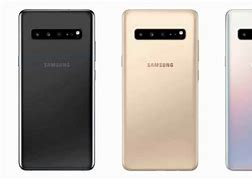

Key Features
An In-Depth Look at Performance, Features & Value in 2024
The Samsung Galaxy S10 5G is packed with next-level features, making it a standout device in the 5G smartphone market. Here’s a breakdown of its key features that set it apart from other devices:
1. Massive 6.7-inch Dynamic AMOLED Display
One of the most impressive features of the S10 5G is its 6.7-inch Dynamic AMOLED display with QHD+ resolution (3040 x 1440), offering stunning visuals with vibrant colors, deep blacks, and sharp details. The HDR10+ support ensures that you’ll get true-to-life colors whether you’re watching movies, playing games, or simply scrolling through social media. The large screen size enhances the experience, making it perfect for streaming, multitasking, and immersive gameplay.
2. 5G Connectivity for Lightning-Fast Speeds
The key selling point of the Samsung Galaxy S10 5G is its 5G capability. This device supports sub-6 GHz and mmWave 5G bands, offering blazing-fast download speeds, ultra-low latency, and the ability to stream and download large files in a fraction of the time it would take on 4G. Whether you’re streaming high-definition videos, gaming online, or using data-heavy applications, the S10 5G ensures that you stay ahead of the curve as 5G networks continue to roll out globally.
3. Quad-Camera System for Versatile Photography
The quad-camera setup on the S10 5G is one of its most notable features. It includes:
12MP wide lens for sharp, vibrant photos in most conditions.
12MP telephoto lens for zooming in without compromising image quality.
16MP ultra-wide lens that lets you capture sweeping landscapes or group shots with ease.
3D depth sensor, which is ideal for adding professional-looking bokeh effects in portraits and improving AR applications. This array gives users unparalleled versatility, allowing them to take a wide range of shots—from wide-angle photos to detailed close-ups.
4. Enhanced Selfies with Dual Front Cameras
For selfie lovers, the S10 5G doesn’t disappoint. It comes with a 10MP main front camera and a 3D depth sensor that enhances facial recognition, portrait mode, and depth effects. These dual front cameras allow for realistic selfies with a natural bokeh effect, even in challenging lighting conditions, making it an excellent choice for anyone who values high-quality front-facing photos.
5. Impressive Battery Life with Fast Charging
The 4500mAh battery in the S10 5G is one of the largest in the Galaxy S10 series, offering solid battery life to support the power demands of 5G connectivity. Samsung has equipped the device with fast charging (both wired and wireless), allowing you to quickly recharge and get back to using your device. The Wireless PowerShare feature also lets you charge other Qi-enabled devices, such as your Galaxy Buds or another smartphone, by simply placing them on the back of the S10 5G.
6. Top-Notch Performance
Under the hood, the Snapdragon 855 (or Exynos 9820, depending on the region) powers the S10 5G, ensuring smooth performance whether you're playing resource-intensive games, running multiple apps simultaneously, or working with heavy files. Coupled with 8GB of RAM, the phone handles multitasking and high-performance applications effortlessly, providing a seamless experience. Storage options include 256GB and 512GB variants, offering plenty of space for apps, photos, and videos, though there’s no microSD card slot for expansion.
7. One UI Software for a Customizable Experience
Samsung’s One UI offers a sleek and user-friendly interface on top of Android 9 Pie (upgradable to later versions). One UI provides intuitive navigation, dark mode for battery saving and ease on the eyes, and plenty of customization options to personalize your phone. Features like Samsung DeX allow you to use your phone as a desktop computer by connecting it to a monitor, while Bixby adds voice assistant capabilities to streamline tasks and commands.
8. Premium Design and Build Quality
The S10 5G boasts a premium design with Corning Gorilla Glass 6 on both the front and back, along with an aluminum frame. It has a smooth, sleek feel, and is IP68 water and dust resistant, meaning it can withstand accidental spills, splashes, and brief immersion in water. The 5G variant features a larger, more expansive form factor, which can be a bit unwieldy for users who prefer smaller devices, but it provides a fantastic screen-to-body ratio that enhances the immersive experience.
9. In-Display Fingerprint Scanner and Facial Recognition
The ultrasonic in-display fingerprint sensor is another standout feature, offering quick and secure access to your device. In addition, the 3D depth sensor for facial recognition makes unlocking the phone even faster and more secure, ensuring that only you can access your device.
10. Stereo Speakers and Dolby Atmos
The S10 5G comes equipped with stereo speakers tuned by AKG, providing rich, immersive sound. The inclusion of Dolby Atmos enhances the audio experience, making it ideal for watching movies, gaming, or listening to music on the go.
In summary , The Samsung Galaxy S10 5G is a highly advanced smartphone designed for those looking to embrace the future of mobile technology. Its 5G capabilities, premium design, and advanced camera system make it a powerful contender in the smartphone market. While the large size and high price may be drawbacks for some, it’s an excellent choice for tech enthusiasts, media consumers, and anyone ready to dive into the 5G experience. Whether you’re capturing stunning photos, streaming 4K video, or blazing through apps with ultra-fast connectivity, the Galaxy S10 5G delivers on all fronts.



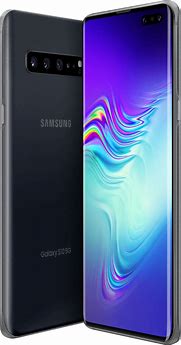
Key Features Table
An In-Depth Look at Performance, Features & Value in 2024
Performance Analysis
An In-Depth Look at Performance, Features & Value in 2024
The Samsung Galaxy S10 5G stands out in terms of performance, driven by the Qualcomm Snapdragon 855 chipset (or Exynos 9820 depending on the region), which is paired with 8GB of RAM. This powerful combination ensures that the device can effortlessly handle demanding tasks such as high-end gaming, video editing, and multitasking with little to no lag. The Snapdragon 855 brings enhanced CPU and GPU performance, offering smoother graphics and better overall system responsiveness compared to its predecessors. When combined with the Adreno 640 GPU, users experience an optimized gaming experience with high frame rates and rich graphics, making it an excellent choice for mobile gamers. The large 6.7-inch Dynamic AMOLED display is perfectly complemented by this power, delivering vivid visuals and smooth interactions whether you’re watching high-definition videos, browsing, or using augmented reality (AR) apps.
A defining feature of the S10 5G is its 5G connectivity, which provides ultra-fast download speeds and low latency, a game-changer for users in regions with 5G infrastructure. The ability to stream 4K content, download large files in seconds, and play online games with minimal lag makes the Galaxy S10 5G a future-ready device. The multi-band support for both sub-6 GHz and mmWave 5G ensures that it is capable of maintaining high-speed connections across various network types, though the mmWave connection’s range and reliability can be impacted in crowded areas or challenging environments. As a result, performance can sometimes be inconsistent in densely populated urban centers where network coverage is still expanding.
However, while the Galaxy S10 5G offers remarkable performance, it does come with certain drawbacks. Battery life can be a challenge, especially when connected to 5G networks. The 4500mAh battery is large by modern standards, but 5G connectivity tends to drain it quickly, particularly when using high-band 5G in areas with inconsistent signal strength. Users may notice a significant drop in battery longevity during heavy 5G usage, requiring more frequent charging during the day. Additionally, the physical size of the S10 5G, with its large 6.7-inch screen, can be uncomfortable for those used to more compact devices, making one-handed use less practical. The device’s substantial size may not appeal to users who prioritize portability and ergonomic comfort.
Another potential weakness is thermal performance during intensive use. Despite the high performance, extended gaming sessions or video rendering can cause the device to heat up, which may lead to thermal throttling, impacting the overall performance temporarily. While not a widespread issue, this could affect users engaged in prolonged periods of demanding tasks.
In conclusion, the Samsung Galaxy S10 5G offers exceptional performance with high-end processing power, a stunning display, and the promise of 5G speeds that elevate it above most smartphones in its class. It’s a powerful, future-ready device that’s great for users seeking the latest tech, but its performance can be hindered by battery drain, size constraints, and occasional network inconsistencies. These factors should be carefully considered by users who want a premium device that can handle both current and emerging technologies.
Market Positioning
The Samsung Galaxy S10 5G occupies a unique position in the smartphone market as one of the first mainstream 5G-enabled devices to offer a combination of flagship-level features and cutting-edge connectivity. Released as part of Samsung’s premium S10 lineup, the device caters to early adopters and tech enthusiasts eager to experience the potential of 5G technology. Positioned as a premium, future-proof device, the S10 5G offers state-of-the-art features such as a large Dynamic AMOLED display, quad-camera system, and advanced biometric security. It also competes in the high-end market alongside other flagship models from brands like Apple and Huawei, but its distinct advantage lies in the inclusion of 5G capabilities, which gives it a unique edge in markets where 5G infrastructure is rapidly expanding.
One of the key strengths of its market positioning is that it appeals to users who want the latest in mobile connectivity without sacrificing top-tier performance, camera quality, or display technology. Samsung effectively markets the device as a future-proof investment, offering a compelling proposition for users who are looking to be ahead of the curve with 5G readiness. Additionally, its feature set, including the large battery, fast charging, and premium design, makes it an attractive option for users who desire flagship specifications and are willing to pay a premium for cutting-edge technology.
However, the market positioning does have some weaknesses. The high price point puts it out of reach for budget-conscious consumers, which limits its accessibility in more price-sensitive markets. Additionally, 5G availability remains limited in many regions, meaning that users in areas without robust 5G coverage may not fully benefit from the phone’s biggest selling point. This could result in a limited user base for the device in the short term. Furthermore, the large size of the device may not appeal to all users, especially those who prefer more compact smartphones, making it less versatile for certain market segments. As 5G becomes more widely available, the Galaxy S10 5G’s unique position may be challenged by newer, more affordable 5G models from Samsung and other manufacturers, reducing its relevance in the long term.


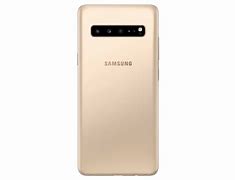

Pros and Cons
Pros and Cons of the Samsung Galaxy S10 5G
The Samsung Galaxy S10 5G stands out in the crowded smartphone market with its impressive blend of premium features, cutting-edge 5G connectivity, and a stellar camera system. However, like any flagship device, it comes with its own set of advantages and drawbacks. Here's a detailed analysis of the pros and cons based on user experiences, technical specifications, and market positioning.
Pros of Samsung Galaxy S10 5G
1. 5G Connectivity
One of the standout features of the Galaxy S10 5G is its support for 5G networks, making it one of the first smartphones to embrace this revolutionary technology. 5G connectivity provides ultra-fast download speeds, low latency, and the ability to stream high-quality content with minimal buffering. For tech enthusiasts and early adopters, this offers a future-proof investment in a device that can handle the demands of emerging mobile technologies, especially as 5G coverage expands in the coming years.
2. Stunning 6.7-inch Dynamic AMOLED Display
The Galaxy S10 5G features a massive 6.7-inch Dynamic AMOLED display with a QHD+ resolution, making it perfect for streaming content, gaming, and browsing. The HDR10+ support further enhances the display's visual appeal, offering vibrant colors, deep blacks, and excellent contrast, creating an immersive viewing experience. It’s one of the best displays available on the market, ensuring high-quality visuals in almost any lighting condition.
3. Versatile Quad-Camera System
The quad-camera system on the S10 5G includes a 12MP wide-angle, 12MP telephoto, 16MP ultra-wide, and 3D depth sensor, offering a highly versatile photography experience. The camera produces sharp, detailed images in various conditions, from wide-angle shots to detailed zoom shots. The 3D depth sensor is particularly useful for advanced portrait mode and augmented reality (AR) applications. The 10MP front camera with a 3D depth sensor also ensures clear, detailed selfies and supports 3D facial recognition for enhanced security.
4. Large 4500mAh Battery with Fast Charging and Wireless PowerShare
Equipped with a 4500mAh battery, the Galaxy S10 5G delivers sufficient battery life for heavy daily use, including 5G connectivity. Fast charging ensures you can get a significant battery boost in a short amount of time, while Wireless PowerShare lets you charge other devices, like your wireless earbuds or another smartphone, using the S10 5G as a power source.
5. Premium Design and Build
The device is built with a glass and metal frame, providing a premium, sleek look and feel. With an IP68 water and dust resistance rating, it can withstand accidental spills and dust, making it durable enough for daily use. The in-display ultrasonic fingerprint scanner adds a layer of sophistication and security, giving users an intuitive and secure way to unlock their phone.
Cons of Samsung Galaxy S10 5G
1. High Price Point
The Samsung Galaxy S10 5G is undeniably a premium device, and with that comes a hefty price tag. While it offers cutting-edge features, its cost might be prohibitive for some users, especially those who do not live in areas with extensive 5G coverage. For users who don't prioritize 5G capabilities, there are more affordable options that offer similar performance at a fraction of the price.
2. Battery Drain with 5G Usage
While the 4500mAh battery is large and capable, 5G connectivity significantly impacts battery life. Users who rely on mmWave 5G, which offers faster speeds but consumes more power, may find the battery drains faster than expected. This can be a concern for heavy users who demand more from their device, as the phone may require frequent recharging, especially during intensive 5G use.
3. Bulkiness and Size
At 6.7 inches, the Galaxy S10 5G is a large device, which can be uncomfortable for users who prefer more compact smartphones. Its size makes one-handed use challenging for many people, and its bulk may not appeal to users seeking portability or those who have smaller hands. The size also contributes to a heavier weight, which may not be ideal for those who prefer lighter devices.
4. Limited 5G Coverage
While the S10 5G is designed to be future-proof with 5G support, the global rollout of 5G networks is still in its early stages. In many regions, 5G infrastructure is limited, meaning that the device may not fully deliver its 5G potential in the short term. Users in areas without robust 5G coverage may not experience the promised speed improvements and may feel that the 5G capabilities are underutilized.
5. No MicroSD Slot for Storage Expansion
Unlike some other premium Samsung devices, the Galaxy S10 5G does not offer a microSD card slot for expanding storage. While the device comes with 256GB or 512GB of internal storage, this can be restrictive for users who store large amounts of media, apps, and data. The lack of expandable storage is a downside for power users who require more flexibility in managing their files.
In conclusion,The Samsung Galaxy S10 5G is a cutting-edge smartphone that delivers impressive performance, a stunning display, and an innovative camera system, making it a great choice for users looking to embrace 5G technology and a premium mobile experience. However, its high price, battery life challenges with 5G, and bulky design may deter certain users, especially those in regions where 5G is not yet widely available. For tech enthusiasts and early adopters, the S10 5G offers future-proof features and high-end specifications. However, for more budget-conscious consumers or those not ready to dive into the 5G revolution, it may be worth considering other options in Samsung's flagship range.


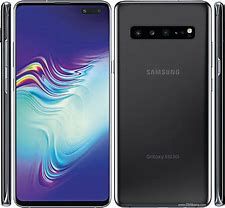

Comparative Analysis
How It Compares to 2024's Flagship Phones in Performance & Value?
Comparative Analysis of Samsung Galaxy S10 5G
The Samsung Galaxy S10 5G was one of the earliest 5G-enabled smartphones in the market, offering future-proof connectivity alongside premium features like a large Dynamic AMOLED display, a quad-camera setup, and a long-lasting battery. However, as more competitors entered the 5G market, the landscape became more competitive. Below, we’ll compare the Samsung Galaxy S10 5G to its key competitors, including the iPhone 12 Pro Max, OnePlus 8 Pro, and Huawei Mate 30 Pro 5G, to highlight how it stands up in terms of features, performance, and value.
Key Competitors
iPhone 12 Pro Max (Apple)
Released in October 2020
5G support (Sub-6 GHz and mmWave)
A14 Bionic chip
6.7-inch Super Retina XDR OLED display
Triple-camera system with LiDAR
OnePlus 8 Pro (OnePlus)
Released in April 2020
5G support (Sub-6 GHz and mmWave)
Qualcomm Snapdragon 865 chipset
6.78-inch Fluid AMOLED display
Quad-camera setup
Huawei Mate 30 Pro 5G (Huawei)
Released in November 2019
5G support (Sub-6 GHz)
Kirin 990 5G chipset
6.53-inch OLED display
Quad-camera system with Leica optics
Strengths and Weaknesses Comparison
Samsung Galaxy S10 5G
Strengths:
5G Connectivity: One of the first devices to support both Sub-6 GHz and mmWave 5G, ensuring faster download speeds and lower latency.
Display: The 6.7-inch Dynamic AMOLED display is one of the best in its class, offering vibrant colors and deep blacks with HDR10+ support.
Camera System: The quad-camera setup (12MP wide, 12MP telephoto, 16MP ultra-wide, and 3D depth sensor) offers a versatile shooting experience, especially with 3D depth for AR applications.
Battery Life: The 4500mAh battery is sizable and supports fast charging and Wireless PowerShare, allowing you to charge other devices wirelessly.
Weaknesses:
Size: Its large 6.7-inch screen can make one-handed use difficult, and the device is quite bulky for those who prefer more compact smartphones.
Battery Life: 5G usage tends to drain the battery quickly, especially with mmWave networks, which is a common issue for early 5G adopters.
Price: At its launch price of around $1,299, it may feel too expensive for users who aren’t ready to embrace 5G.
iPhone 12 Pro Max
Strengths:
5G Connectivity: Full 5G support (Sub-6 GHz and mmWave) allows for superior performance in 5G coverage areas.
Camera System: The LiDAR scanner enhances AR capabilities and low-light photography, alongside a versatile triple-camera system.
Performance: Powered by the A14 Bionic chip, the iPhone 12 Pro Max provides best-in-class performance for both general tasks and graphics-heavy applications.
Premium Design: The stainless steel frame and Ceramic Shield front cover offer durability and a premium feel.
Weaknesses:
Price: Like the S10 5G, the iPhone 12 Pro Max is priced at the higher end, which may not appeal to budget-conscious consumers.
Battery Life: While it’s improved, the relatively small 3687mAh battery struggles with heavy 5G use, especially on mmWave networks.
OnePlus 8 Pro
Strengths:
5G Connectivity: Like its competitors, the OnePlus 8 Pro supports both Sub-6 GHz and mmWave, offering a fast and reliable 5G experience.
Display: The Fluid AMOLED 120Hz display makes for an ultra-smooth viewing experience, especially for gaming and scrolling.
Performance: The Snapdragon 865 paired with 12GB of RAM ensures excellent multitasking and gaming performance.
Affordability: At $899 at launch, it offers a more affordable alternative compared to the S10 5G and iPhone 12 Pro Max.
Weaknesses:
Camera: Although capable, the camera system doesn’t quite match up to the level of the Galaxy S10 5G or iPhone 12 Pro Max, particularly in low-light performance.
Software: While OxygenOS is fast and fluid, it may not have the same polish or ecosystem integration as iOS or Samsung One UI.
Huawei Mate 30 Pro 5G
Strengths:
Camera System: The quad-camera setup with Leica optics delivers impressive image quality, especially in low light. The 40MP main sensor and the 40MP ultra-wide offer excellent versatility.
Battery Life: The 4500mAh battery provides long-lasting performance, and the fast charging capabilities ensure minimal downtime.
5G Connectivity: Solid Sub-6 GHz 5G support, providing fast data speeds in regions where 5G is available.
Weaknesses:
Limited Software Support: Due to Huawei’s restrictions in some markets, the phone doesn’t come with Google services, which limits access to the Play Store and other Google apps.
Price: Similar to the S10 5G, the Mate 30 Pro 5G’s premium features come at a high price, and its value proposition is diminished by software limitations in markets outside China.
In conclusion,The Samsung Galaxy S10 5G holds a strong position in the market as one of the first 5G smartphones, with an excellent display, camera system, and battery life. However, as the 5G ecosystem matures, competitors like the iPhone 12 Pro Max, OnePlus 8 Pro, and Huawei Mate 30 Pro 5G have introduced similar features, but with unique strengths and weaknesses. The iPhone 12 Pro Max excels in camera quality and performance but comes at a higher price, while the OnePlus 8 Pro offers a more affordable alternative with excellent display and performance, but falls short in camera quality. The Huawei Mate 30 Pro 5G impresses with its camera system but is hampered by software limitations outside China.
When choosing between these devices, users need to consider factors such as 5G availability, camera preferences, operating system, and budget. If 5G connectivity and camera versatility are your top priorities, the S10 5G remains a solid choice, though the competition is closing in quickly.
Key Features Comparison Table
User Experience
The user experience of the Samsung Galaxy S10 5G offers a blend of cutting-edge technology and premium design, aimed at providing a smooth, enjoyable, and intuitive experience. From the moment you pick up the phone, you are greeted by its large 6.7-inch Dynamic AMOLED display, which delivers vibrant colors, deep blacks, and impressive brightness, making it perfect for media consumption and gaming. The One UI software overlay, built on Android, adds a layer of customization, offering a clean interface and easy navigation with features like Edge Panels for quick access to apps and tools, and Digital Wellbeing tools for managing screen time. The 5G connectivity enhances the browsing, streaming, and gaming experience, offering faster data speeds and low latency when connected to 5G networks, which is a huge advantage over 4G devices.
However, while the performance is generally smooth, powered by the Snapdragon 855 (or Exynos 9820) chipset and up to 8GB of RAM, it can sometimes be hindered by the drain on battery life due to continuous 5G usage, especially when utilizing mmWave networks, which are faster but require more power. The phone also offers a very comfortable in-hand feel despite its large size, though users with smaller hands might find one-handed use somewhat cumbersome. The camera experience is another highlight, with the quad-camera setup delivering detailed shots, great color accuracy, and excellent versatility for various shooting scenarios. However, the bloatware—pre-installed apps and Samsung's own apps—can sometimes crowd the interface, and might not be necessary for all users. Despite these minor drawbacks, the Samsung Galaxy S10 5G remains a solid choice for anyone looking to experience the future of mobile connectivity with excellent display, performance, and camera features.
Price Range
Cutting-Edge Technology and Price Comparison in 2024
When it was first released, the Samsung Galaxy S10 5G entered the market at a premium price, with an initial cost of around $1,299 for the base model with 256GB of storage. This price point positioned it as a high-end flagship device, catering to early adopters of 5G technology who were looking for cutting-edge features like the large 6.7-inch Dynamic AMOLED display, quad-camera setup, and future-proof 5G connectivity. However, as newer models have been launched, including the Samsung Galaxy S20 5G and S21 5G, the price of the S10 5G has gradually decreased, making it a more attractive option for budget-conscious consumers who want access to 5G capabilities without paying the full price of the latest flagship devices.
As of 2024, you can find the Samsung Galaxy S10 5G at lower prices through online retailers and carriers, with prices ranging from approximately $400 to $600, depending on the condition (new or refurbished) and whether it’s purchased unlocked or through a carrier contract. This price range puts it in competition with mid-range to high-end smartphones that still offer excellent performance, though with some compromises in newer features and 5G capabilities compared to more recent models. For users primarily focused on 5G and solid overall performance without splurging on the latest technology, the S10 5G provides good value for its price, especially considering its premium build quality, large screen, and camera capabilities. However, buyers should also consider that newer devices may offer better battery life, updated software, and more advanced 5G features at a similar or slightly higher price point.


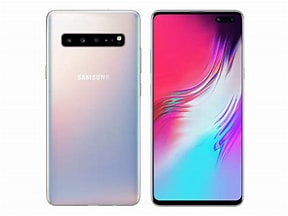

Evolution from Previous Models
The Samsung Galaxy S10 5G represents a significant evolution from its predecessors in the Galaxy S series, offering several advancements in both hardware and software. Compared to the Samsung Galaxy S9 and S8, the S10 5G introduces major upgrades in areas like display, performance, and connectivity. For instance, the 6.7-inch Dynamic AMOLED display in the S10 5G is much larger and offers higher resolution and better color accuracy than the smaller Quad HD Super AMOLED screens found in earlier models. The addition of 5G connectivity sets the S10 5G apart, marking Samsung’s commitment to bringing next-generation connectivity to the masses, a leap forward from the 4G LTE support in the S9.
Moreover, the camera system in the S10 5G is more advanced, with a quad-camera setup that includes a 3D depth sensor for better portrait photography and augmented reality (AR) experiences. The S9, by comparison, only offered a dual-camera setup. Performance has also been boosted with the inclusion of the Snapdragon 855 or Exynos 9820 chipsets, compared to the older Snapdragon 845 in the S9, providing smoother multitasking and more efficient power consumption. The battery in the S10 5G has been significantly improved as well, with a 4500mAh capacity, which was a big upgrade from the S9’s 3000mAh battery, offering better longevity, especially with 5G usage.
In terms of design, the S10 5G follows the sleek design language of the S9 but expands the screen size and introduces a hole-punch front camera, moving away from the more traditional bezel design. This evolution not only makes the device more future-ready but also positions it as a bridge to newer models like the Galaxy S20 and S21, which continue to innovate with features like 120Hz displays and advanced AI-powered cameras. While the S10 5G may no longer be the newest device on the market, it remains a solid choice for those seeking premium features and 5G readiness without going for the latest releases.
Key Decision-Making Factors
When considering the Samsung Galaxy S10 5G, there are several key decision-making factors to keep in mind to ensure it meets your needs. First, if you're looking for future-proofing in terms of connectivity, the 5G capability is a major selling point. It allows faster download speeds and smoother streaming, especially as 5G networks continue to expand. Another factor to consider is the display—the 6.7-inch Dynamic AMOLED screen offers vibrant colors and sharp resolution, making it perfect for media lovers and gamers who prioritize a large, high-quality screen. For those into photography, the quad-camera system with a 3D depth sensor is a standout, offering excellent versatility and depth for portraits and AR experiences.
Additionally, the battery life has been greatly improved from its predecessors, with a 4500mAh battery that provides all-day power, even when utilizing 5G. However, if budget is a concern, the S10 5G’s initial premium pricing may be a factor to weigh, though prices have dropped since its release. You should also think about software updates—while the S10 5G is still supported, it’s not as future-proof as newer models like the S20 or S21 when it comes to long-term updates. Finally, if you're not in need of 5G right now, it might be worth considering newer models that offer improved cameras, battery life, and performance at a similar or slightly higher price. Ultimately, whether the S10 5G is right for you depends on how much you value cutting-edge technology, such as 5G and a large, immersive display, alongside performance and camera features that are still top-tier in today’s market.
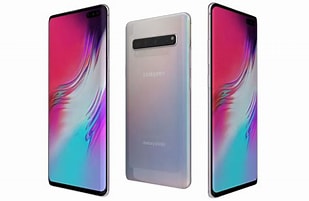



Conclusion
In conclusion, the Samsung Galaxy S10 5G stands as a noteworthy device that bridges the gap between the cutting-edge future of mobile technology and the current needs of users who desire a premium smartphone experience. With its introduction of 5G connectivity, it was one of the first devices to offer true next-generation speeds, making it an appealing choice for early adopters looking to future-proof their smartphones. Coupled with a 6.7-inch Dynamic AMOLED display, which is vibrant and immersive, and the quad-camera system that includes a 3D depth sensor, it positions itself as an impressive option for those who prioritize media consumption and advanced photography. The Snapdragon 855 chipset (or Exynos 9820 in certain regions) ensures powerful performance, making multitasking and gaming smooth and efficient, though it's worth noting that 5G usage can be demanding on battery life, with the 4500mAh battery struggling slightly when connected to mmWave 5G networks.
From a market positioning perspective, the Galaxy S10 5G began as a high-end device with a price tag close to $1,300 but has since seen significant price reductions as newer models have emerged. Despite being somewhat overshadowed by the S20 and S21 series, which boast better cameras, higher refresh rate displays, and other enhanced features, the S10 5G remains a compelling choice due to its 5G support, a large and high-quality display, and decent all-around performance. It is especially appealing to those who are not ready to invest in the very latest flagship models but still want a premium experience. In terms of competitors, it faces direct competition from devices like the OnePlus 8 5G and iPhone 12 5G, both offering 5G capabilities and solid performance at a competitive price point. The key decision-making factors for prospective buyers come down to whether they prioritize 5G connectivity, display quality, and camera versatility over more recent advancements like improved battery life and the latest chipset.
Looking at the evolution from previous Galaxy models, the S10 5G is a clear leap forward in terms of connectivity and display size, and it’s one of the first devices to embrace 5G in a way that’s accessible to mainstream users. However, it’s also worth noting that while the S10 5G was revolutionary at launch, advancements in mobile tech have rapidly moved forward, meaning some of its features—such as the camera system and performance—are now equaled or exceeded by newer devices. In the end, the Samsung Galaxy S10 5G offers a strong balance between cutting-edge technology and value for money, particularly for users seeking to experience 5G without opting for the most expensive, newest models. However, for those who are seeking the most up-to-date specs, the newer S20 and S21 series may be a better choice, depending on the user's specific needs and budget.
In-depth analysis of products across categories.
Contact us info@bestinclassreview.com
© 2024. All rights reserved.
Subscribe for Latest Tech
Article News & Reviews
📬 Stay Ahead with the Latest Tech Article News & Reviews!
If you found this review helpful and want to stay informed about the latest features, security updates, tech article news, and smart insights, don’t miss out on what’s coming next.
👉 Subscribe now to get fresh reviews, breaking tech news, in-depth tech articles, and expert analysis delivered straight to your inbox.
Be the first to know—because staying informed means staying secure.
🔔 Subscribe Here
Your smarter tech journey starts today!
